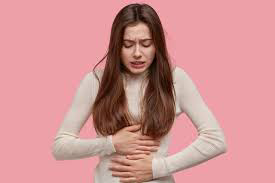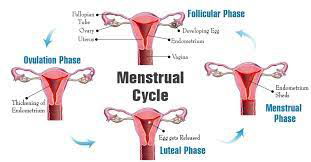In this article we are going to discuss about very common topic about Period cramps and how to relief from these cramps. Many people have period pains, commonly referred to as dysmenorrhea, as a frequent symptom of menstruation. They are often brought on by the uterus contracting as it removes its lining.
Period cramps come in two different varieties:
The most typical type of dysmenorrhea, primary dysmenorrhea is unrelated to any underlying medical conditions. Typically, primary dysmenorrhea starts a few years after a person first starts menstruation.
An underlying medical problem, such as end one trios is, uterine fibroids, or pelvic inflammatory disease, can lead to secondary dysmenorrhea. Compared to primary dysmenorrhea, secondary dysmenorrhea may develop later in life or be more severe.
Here are some methods that could help relieve menstrual cramps:
Nonsteroidal anti inflammatory medicines (NSAIDs), such as ibuprofen or naproxen, can help lessen the discomfort and swelling brought on by cramps. It's normally advised to start taking them as soon as you notice any symptoms, or as your doctor may instruct you.
Heat therapy: By relaxing the uterine muscles and lowering pain, using a heating pad or having a warm bath can offer relief.
Exercise:
Walking, yoga, or other gentle workouts might help ease cramps by promoting blood flow and the release of endorphins, which are chemical messengers that act as natural painkillers.
Dietary modifications:
Some people discover that lowering their diet of salt, alcohol, and caffeine might aid with cramp relief. Additionally, include meals containing Omega-3 fatty acids and calcium, which can be found in dairy products, leafy greens, and fortified meals, may be helpful.
Herbal remedies:
A number of herbal beverages, including chamomile, ginger, and peppermint, may have calming properties and be able to ease period cramps. However, there isn't much scientific data to back up their efficacy, so it's best to speak with a healthcare provider before taking any herbal therapies.
It's crucial to speak with a healthcare provider if your period cramps are severe, significantly impair your everyday life, or are coupled with other unsettling symptoms. They can assess your symptoms, establish whether an underlying illness is causing the discomfort, and suggest the best course of action.
The monthly procedure that a person with a uterus normally goes through is referred to as a menstrual cycle. Numerous hormonal and physiological changes occur during the menstrual cycle, preparing the body for pregnancy.
Although the menstrual cycle typically lasts 28 days, it can last anywhere from 21 to 35 days and still be seen as normal. It's crucial to remember that cycle lengths might differ from person to person and even from month to month for an individual.
There are various phases in the menstrual cycle:
Menstruation, or the shedding of the uterine lining, occurs on Days 1 through 5 of the cycle. Vaginal bleeding ensues from this, which normally lasts for 3 to 7 days.
Follicular Phase (Days 1–14):
The follicular phase starts after menstruation. When this
Follicle stimulating hormone (FSH) is secreted during the follicle stimulating phase, which promotes follicle growth in the ovaries. Eventually, one of these follicles will mature into an egg.
Ovulation (Around Day 14):
The mature egg is released from the ovary and travels via the fallopian tube to signal ovulation. It usually occurs around day 14 of a 28-day cycle and is the most fertile time of the menstrual cycle.
After ovulation, the ruptured follicle in the ovary changes into a structure known as the corpus luteum. This phase lasts from days 15 to 28. Progesterone is produced by the corpus luteum and aids in preparing the uterus for prospective pregnancy. In the absence of pregnancy, the corpus luteum degrades, causing hormone levels to decline, and the menstrual cycle to restart.
It's critical to remember that changes in cycle length, hormonal balance, and menstruation symptoms can be brought on by a variety of things, including stress, hormone imbalances, underlying medical issues, and more. The best course of action if you have questions or concerns regarding your menstrual cycle is to speak with a healthcare provider who can offer personalised advice and address any unique concerns you might luteum.
Periods pain instant relief medicine.
Nonsteroidal Antonin flank story medicines (NSAIDs): medicines like naproxen sodium (Aleve) and ibuprofen (Advil, Motrin) can help lessen inflammation and ease the pain of menstrual cramps. It's normally advised to start taking these medications as soon as you notice any symptoms, or as your doctor may instruct you.
Although it may not particularly target inflammation, acetaminophen (Tylenol) can help relieve pain and lessen discomfort related to menstrual cramps.
Combination drugs: A number of over-the-counter drugs are designed expressly to reduce menstrual pain and may include a mix of analgesics such acetaminophen, aspirin, and caffeine. These medications are made to treat a variety of ailments, such as cramps, headaches, and exhaustion.
Antispasmodics: These drugs operate by calming the uterine muscles, which might lessen cramping. Some nations might have access to over-the-counter antispasmodic drugs such mefenamic acid (Ponstel) or hyoscine butylbromide (Buscopan).







0 Comments